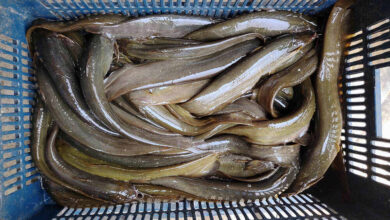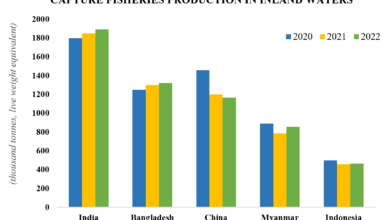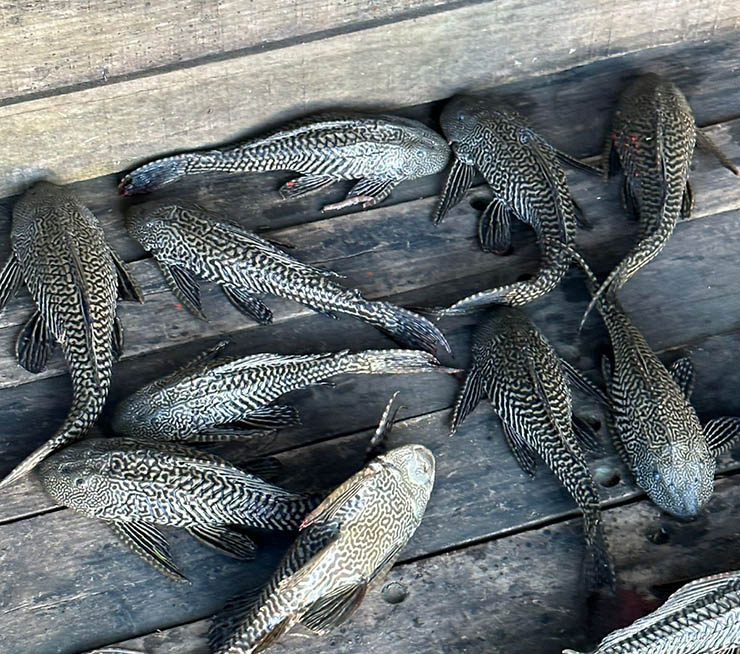
A ban has been imposed on Suckermouth catfish by Bangladesh’s fisheries and livestock ministry against the breeding, cultivation, conservation, and distribution. Although some experts suggest alternatives for exploiting its economic potential.
The suckermouth catfish, formerly brought to Bangladesh in the 1980s as a decorative and cleaning fish for aquariums, has now become a major threat to fishing and farming.
It is unknown how these species ended up in open water even though they were imported as ornamental fish. This fish, albeit difficult to pin down, currently dominates the spawning sites of several native species. Due to the suckermouth catfish’s aggressive nature and omnivorous nature, this reality was inevitable.
Because it competes with local fish for habitat and food, experts worry that this species represents an imminent danger to the aquatic environment. Additionally, this fish is causing the extinction of native fishes and the destruction of aquatic ecology and livelihoods that depend on it.
Nur Islam, a fisherman at Buringanga River, said, “This river is full of Suckermouth fishes, and even one can spot so many at night.”
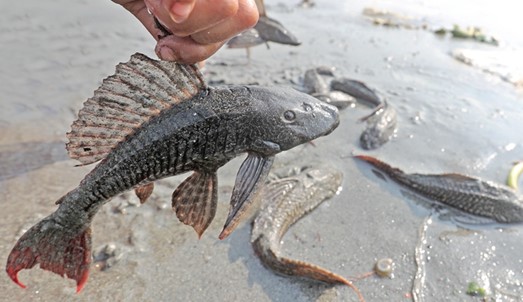
This fish can live in brackish and highly polluted water and survive in hypoxic conditions [without enough oxygen]. It is for this reason that suckermouth catfish are abundant in Buriganga’s extremely polluted water.
The government eventually banned the rearing, selling, transportation, and protection of suckermouth catfish since the species is invasive. In addition, the ministry has requested citizens to destroy suckermouth catfish colonies by killing them and burying their carcasses. In many ways, it is like a rat-culling program.
But the question is, how effective will this ban be in stopping the advance of the ‘successful invaders’?
It will take considerable time to get a proper answer to this question. However, some fisheries experts believe that more research is needed on this species in order to maximize its economic potential.
“A suckermouth catfish is not poisonous from birth. Animal feed can be made from the meat of non-toxic fish. Owing to the enormous need for protein-rich feed on the global market, it will both satisfy local demand and open up new export markets,” said Md. Masud Rana, Assistant Professor of Sher-e-Bangla Agricultural University.
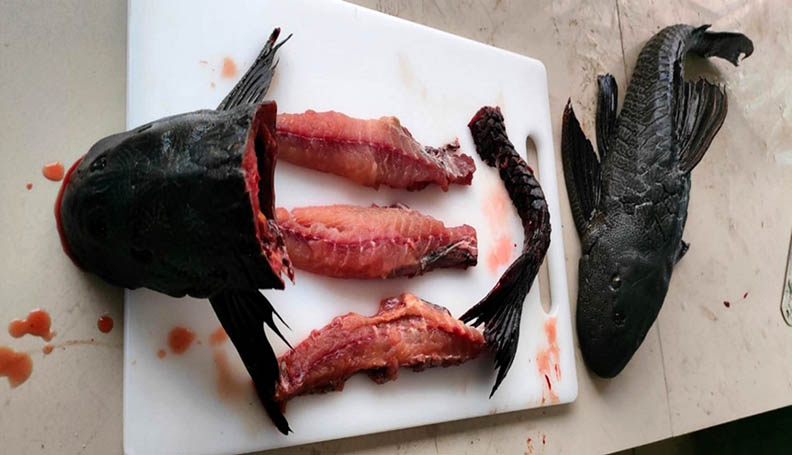
Photo: Masud Rana
The fish has a maximum length of 45 cm, a maximum weight of 1500 gm, and a 52–56% meat percentage. The protein content of mature suckermouth catfish ranges from 20.55-21.22%, which is 2-4% higher than that of other carp fish and catfishes.
There are several ways to use toxic fish skins and bones, and the meat can be buried. Fish bones and skins, such as those from suckermouth catfish, are frequently used to adorn leather goods like purses, ready-made clothing, and accessories like buttons.
Fish skins are highly valued in the leather industry because of their zigzag pattern. Additionally, fish skins tend to be thinner and smaller than cattle skins, which reduces the amount of chemicals and energy required to tan them. A crisscrossing structure of the fibers makes them stronger, whereas cowhide is less elastic and prone to tearing.
“So the economic potential of this fish is quite high but only if we can use it properly,” said Masud Masud Rana.
There is a very high hatching success rate among suckermouth catfishes, which makes them prolific breeders. Therefore, experts think a ban on this fish might not help to control its growth at all.
A fisherman might be motivated to catch these fish only if they can be used for economic purposes and have a resale value. Therefore, the Government may be able to succeed by bringing value to existing ‘malicious’ fish as well as enforcing the ban in a strict manner.
Jaber Bin Abdul Bari
Department of Oceanography, NSTU

